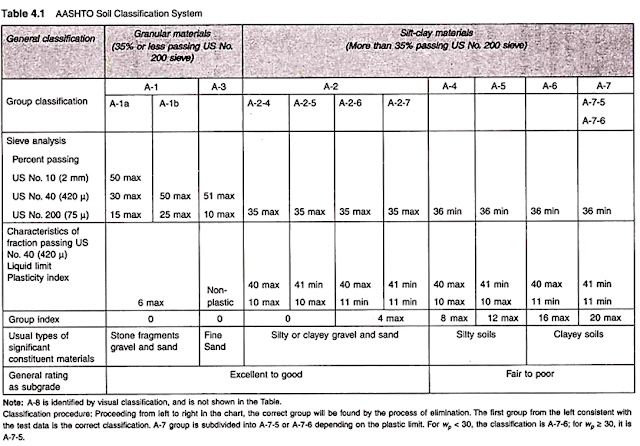Comparison: AASHTO & Unified Soil Classification System

Comparison between AASHTO and unifical soil classification system Comparison # AASHTO M145 Classification System : American Association of State Highway and Transport Officials (AASHTO) soil classification system is based on both the particle size and the plasticity characteristics. According to this system, soils are classified into eight groups A-1 to A-8, the last being peat or muck. Soils within each group are evaluated according to the group index (GI) calculated from the following empirical formula – GI = 0.2 a + 0.005 ac + 0.01 bd Where a = that part of the percent passing US sieve No. 200 greater than 35, and not exceeding 75, expressed as a positive whole number (1 to 40); b = that part of the percent passing US sieve No. 200 greater than 15, and not exceeding 55 expressed as a positive whole number (1 to 40); c = that part of the liquid limit greater than 40, and not greater than 60, expressed as a positive whole number (1 to 20), and d = that part of t...


